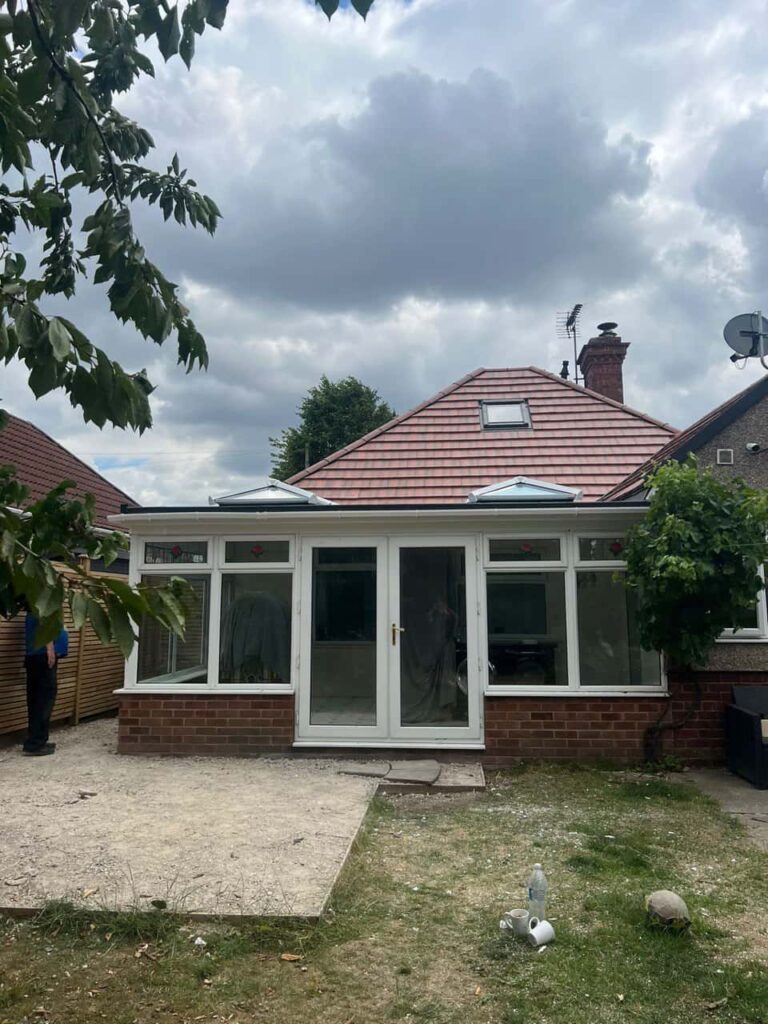Flat roofs are a popular choice for both residential and commercial properties, offering modern aesthetics and practical space-saving advantages. However, unlike pitched roofs, flat roofing systems come with unique vulnerabilities that can lead to serious issues if not properly maintained. At Heanor Roofing Repairs, we’ve seen first-hand how early intervention can prevent costly damage for homeowners across Heanor, Derbyshire.
If you own a property with a flat roof, it’s essential to understand the warning signs of failure. Below are five critical red flags that should never be overlooked.
1. Persistent Pooling Water
By design, flat roofs have a very slight pitch to allow water runoff. When water starts to pool and linger for more than 48 hours after rainfall, it’s a sign that the roof is not draining properly. This could be due to blocked outlets, sagging decking, or poor installation. Standing water significantly increases the risk of leaks and premature membrane deterioration.
2. Cracking, Blistering, or Bubbling in the Surface
These surface issues often occur when moisture gets trapped beneath the roofing material or when the membrane is exposed to excessive heat. Cracks and blisters weaken the roof’s protective barrier, leaving it vulnerable to water ingress. Even small imperfections can quickly escalate into widespread damage if not addressed by a professional roofer.
3. Water Stains or Damp Patches on Interior Ceilings
One of the most common—and easily missed—indications of a flat roof problem is interior staining. If you notice brown patches, peeling paint, or mould forming on ceilings directly below your flat roof, it’s a likely sign that water has penetrated the membrane and is beginning to damage the structure below. Quick detection and repair can prevent more serious structural damage.
4. Sagging or Uneven Roof Surface
A well-installed flat roof should appear level and stable. If you spot areas that look sunken or feel spongy underfoot (if it’s a walkable roof), this could indicate rotting timber, waterlogged insulation, or a failing deck. Left unchecked, a sagging roof can become a major structural hazard and will likely require significant restoration.
5. Loose or Damaged Flashings
Flashing is used to seal and protect the edges and joins of a flat roof—particularly around skylights, vents, and parapet walls. When flashings become loose, cracked or detached, they compromise the roof’s waterproofing and often become the point of origin for leaks. Regular inspection and prompt resealing or replacement is essential to maintain the roof’s integrity.
Why Acting Early Matters
Flat roof issues often start small and become severe due to delayed repairs. The cost of minor maintenance is far less than the expense of a full roof replacement or repairing internal structural damage. Property owners in Heanor should be proactive—especially during or after the winter months when flat roofs face increased strain from heavy rain and frost.
Conclusion
Flat roofs, when properly maintained, can serve your property well for decades. However, it’s crucial to recognise and act on early warning signs to avoid more serious and costly repairs. At Heanor Roofing Repairs, we specialise in identifying and resolving flat roof problems before they spiral out of control. If you’ve noticed any of the red flags above, don’t wait—contact our team today to arrange a prompt inspection and professional advice. Your roof—and your property—deserve nothing less.
Call us on: 01773 300 896
Click here to find out more about Heanor Roofing Repairs
Click here to complete our contact form and see how we can help with your roofing needs.

